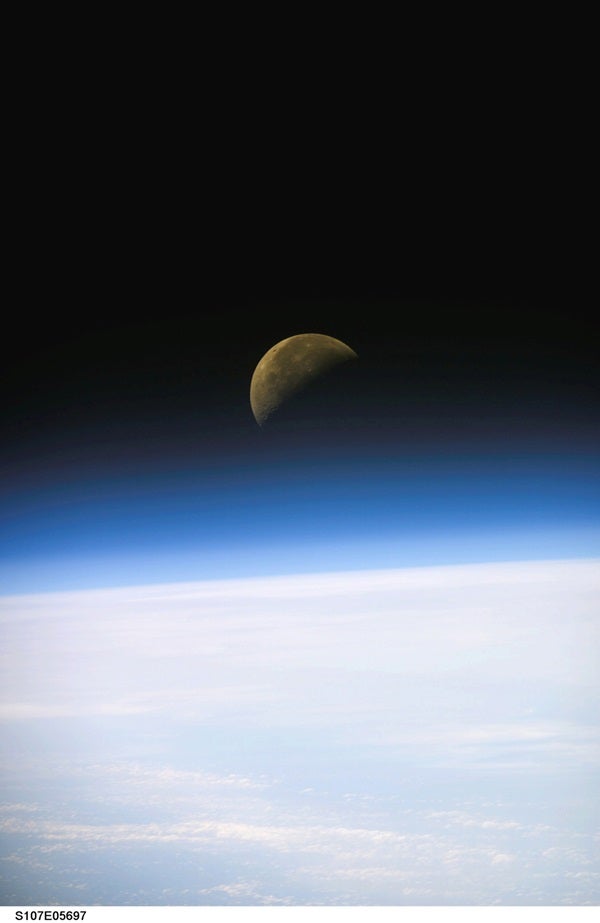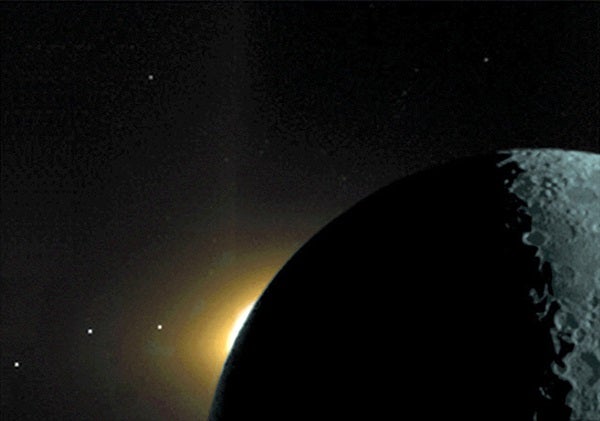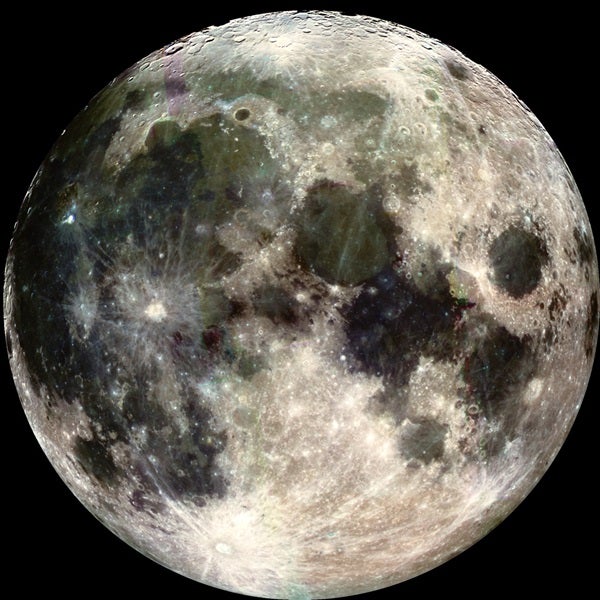Our planet is a strange one, judging by the standards of our solar system. It’s the only one with lots of liquid water. But there’s a much weirder aspect to Earth — the Moon is huge relative to its nearest neighbor. Look at Venus with no moons, Mars with its two tiny potato-shaped moons, and Mercury with no moon. Earth is special in the solar system because it has such a large moon. Pluto also has a moon, Charon, that’s large compared with its host planet.

Bringing the universe to your door. We’re excited to announce Astronomy magazine’s new Space and Beyond subscription box – a quarterly adventure, curated with an astronomy-themed collection in every box. Learn More >>.
For many years, planetary scientists struggled with ideas about the Moon’s origin. Their ideas included “co-accretion,” in which Earth and the Moon formed independently and then came together gravitationally; “capture,” in which Earth gravitationally dragged the Moon into orbit after its formation and a near-miss encounter; and “fission,” in which Earth’s interior belched out the Moon like the splitting of a cell. None of these ideas fully convinced astronomers or matched up with what planetary scientists knew about the Earth-Moon system.
The Apollo missions to the Moon revolutionized thinking about our nearest celestial neighbor. Apollo astronauts found that oxygen isotopes in Moon rocks are similar to those on Earth, indicating the Moon and Earth formed in the same region of the solar system.
The Moon also is devoid of volatile elements that melt at high temperatures, suggesting it had a very hot birth. Oddly, the more scientists found out about the Moon’s rocks, the more the rocks appeared to resemble Earth’s mantle — the outer shell of rock on our planet. But Earth’s mantle emerged from the more metallic, denser core when our planet formed. How could rocks from the Moon, a separate body, resemble the material in Earth’s mantle?
The clues to a solution came from an unexpected direction. Apollo 11 astronauts returned samples containing strange white pebbles that suggested the lunar highlands are composed of an igneous rock called anorthosite.
The rock contains large amounts of a mineral class called plagioclase feldspars. These minerals, composed of sodium and calcium aluminum silicates, are commonly found in Earth’s crust. The samples also contain small amounts of pyroxenes and olivine. The strangeness of this finding comes from the relative purity of the feldspars; most minerals in nature are all mixed up into rocks. But Apollo showed that much of the lunar crust is composed of anorthosite and similar rocks, with high concentrations of plagioclase feldspars. That’s not what scientists would have expected.
The solution had to be something like this: Soon after its formation, the Moon may have been covered by an ocean of liquid rock that crystallized as plagioclase feldspar over its surface. Another key piece of evidence centered on the solar system’s largest impact basin, the South Pole-Aitken Basin on the Moon’s farside. The basin’s size — more than 1,500 miles (2,400 kilometers) across — shows that huge catastrophic collisions occurred. These two lines of evidence have led to the current thinking about where the Moon came from.
About 4.6 billion years ago, two planets floated in the space now occupied by the Earth-Moon system, according to most planetary scientists. Proto-Earth had 50 to 90 percent of its current size and mass, while the second planet — a body about the size of Mars — no longer exists. Planetary scientists believe the smaller protoplanet struck Earth at a grazing angle. The collision sped up Earth’s rotation and melted the mantles of both planets and reformed them, creating the plagioclase feldspar. Later on, the majority of the impactor’s mass accreted onto Earth’s surface. For a time, then, after the impact, Earth would have had Saturn-like rings.
The Saturn-like disk would be unstable, however, and the Moon likely accreted from this huge mass of particles. This scenario probably occurred in as little as a few years to as many as a few thousand years, either one a very short time span in planetary terms. This hypothesis, based on geology and orbital mechanics, offers by far the best and most logical way to understand how Earth’s Moon formed.












